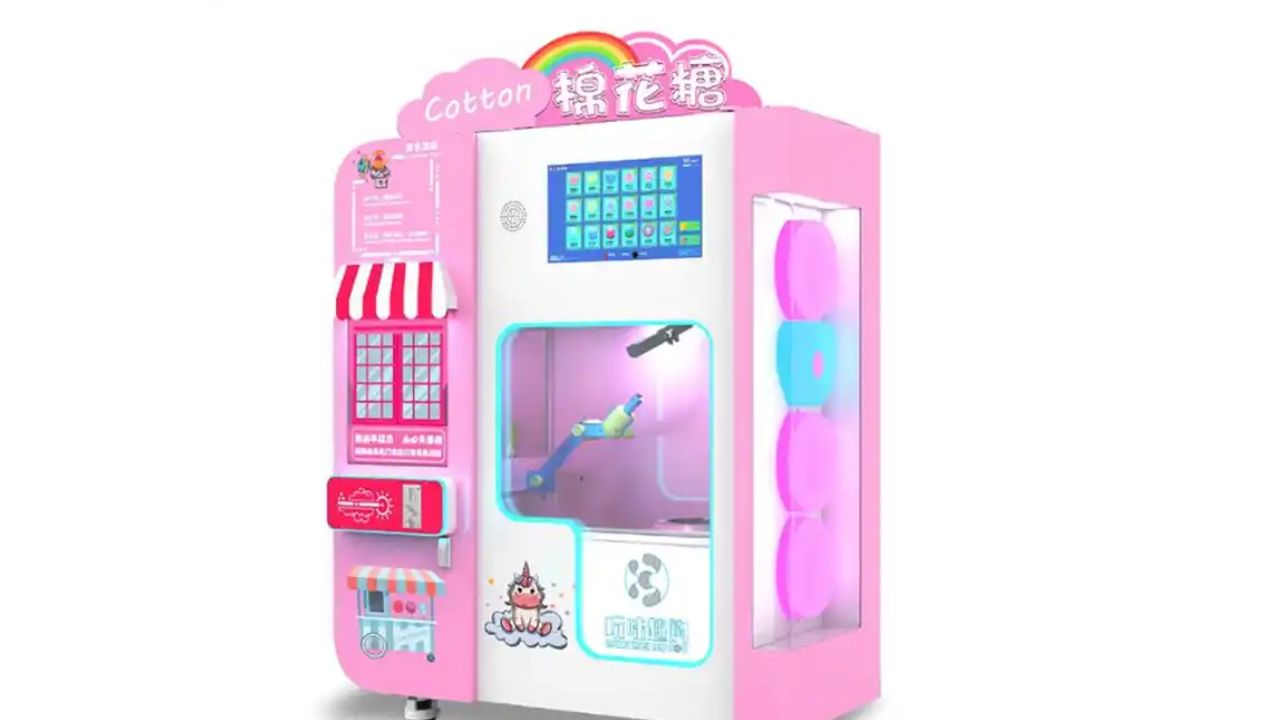Spun sugar, or cotton candy, gets its name from the process of spinning sugar into delicate, airy strands of sweetness. All you would need to do is fill the machine with ordinary granulated sugar, and it would turn into fluffy cotton candy. But the majority of people prefer their treat to have some flavor and color added.
A confectionery engineering marvel is the professional cotton candy machine. Its cutting-edge technology and meticulous craftsmanship guarantee that each batch of cotton candy is a confection of sugary bliss. This machine will leave your customers spellbound as it effortlessly turns sugar into ethereal clouds of sweetness, the ideal marriage of art and automation. Here on this website, you can find more items… including the cotton candy machine.
Advice for Purchasing a Cotton Candy Machine
When looking for the best cotton candy machines, keep an eye out for the following:
Cost
The cost of cotton candy machines varies. On the lower end of the spectrum, small and less sophisticated units are good for domestic consumption and retail for a few dollars apiece. Large, automated machines, on the other hand, cost thousands of dollars and are much more expensive. The needs of clients wishing to launch a large-scale cotton candy business are satisfied by these machines.
Size of Bowl
The size of the cotton candy that a machine can make depends on the bowl size. An inch-wide bowl is used by manufacturers to determine its size. Larger-bowled machines are appropriate for candy-floss businesses that focus on retail sales. Larger floss can be produced by commercial cotton candy machines because their bowls are typically larger than 20 inches in diameter. Smaller candy floss machines, typically with bowl sizes ranging from 14 to 20 inches, are better suited for entertaining or selling at special events or markets.
Materials
For durability, food safety, and aesthetics, cotton candy machines are constructed from a variety of materials. Aluminum, premium plastics or stainless steel are molded to create the motor and its housing. These are robust materials that should last a long time if the machine is properly maintained.
Usually, a thin sheet of aluminum or stainless steel that is rustproof and polishable serves as the bowl. Using cutlery-grade materials lessens the need to maintain hygienic conditions and lowers the possibility of contaminating food. A steel bowl is flawless when it is polished.
Size of the Machinery
Many machines in various sizes are available for the cotton candy market. The smallest machines are tabletop or compact models, which weigh under fifty pounds. They have padded legs instead of wheels to support the machine steadily while the motor runs. Cotton candy machines on carts are a little bit bigger. They are primarily found around shopping centers, on street corners, and at carnival fairs. They are also the greatest when it comes to providing candy floss for parties or special occasions in terms of entertainment.
Motor Output and Speed
When choosing the best kind of cotton candy machine, the motor’s power and speed are crucial factors to consider. Typically, machines have motors that run at speeds exceeding 1000 rpm and consume over 35 and 1000 W of heating power, respectively. Conversely, commercial machines use strong motors capable of spinning at 5000 rpm to create candy strands the size of nanometers.
Capacity of Production
A machine’s production capacity is determined by its size and complexity. One serving, for example, can be produced by a small, compact machine in less than thirty seconds. On the other hand, one medium-sized candy can be produced by industrial machines every second. But the size of the cotton candy also matters; larger candies would logically require more time.
Final Words
More than just a piece of machinery, a professional cotton candy machine is a doorway to superior confections. With its accuracy, automation, and potential for profit, it is an essential tool for any budding candy company owner. A commercial cotton candy machine is essential for sweet success whether you’re launching a brand-new company or hoping to grow your current one.

